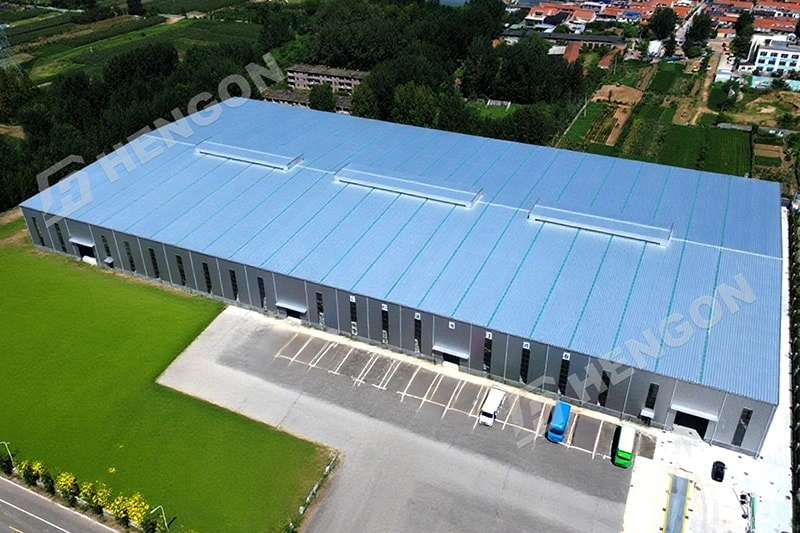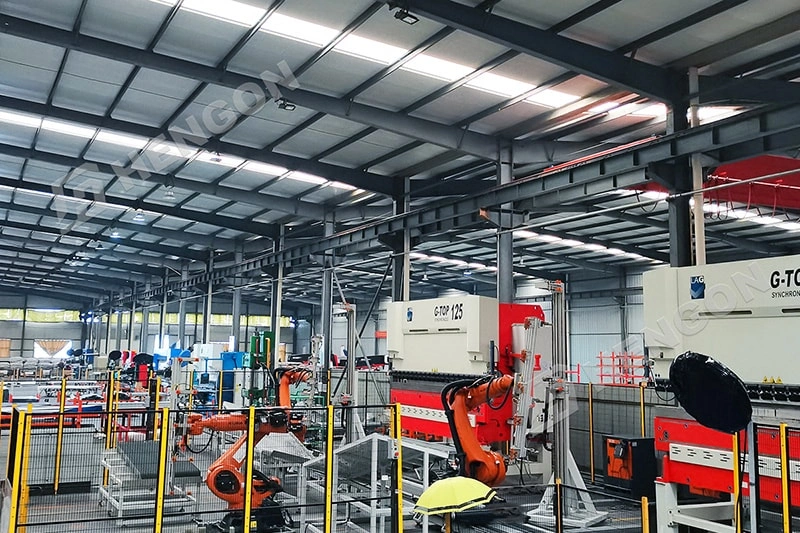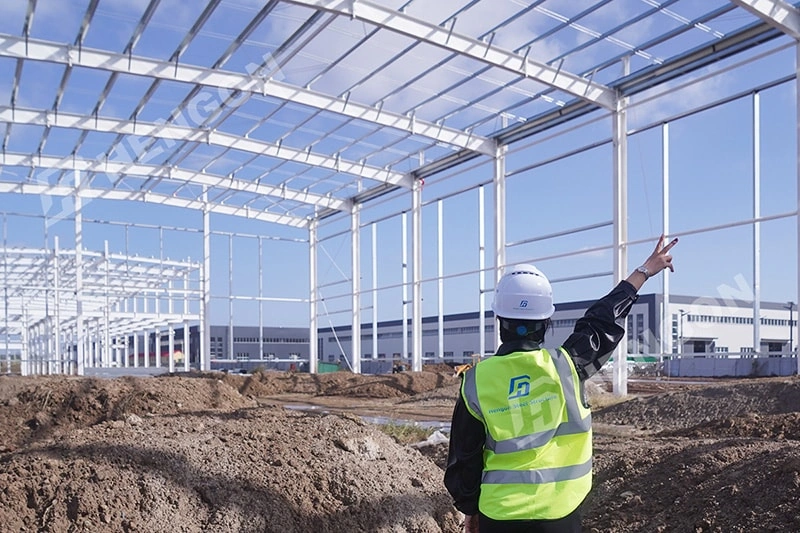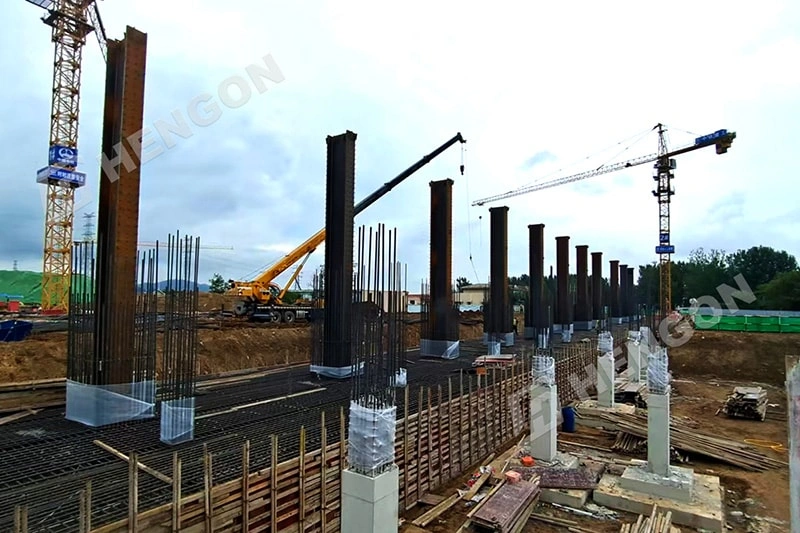In the global market for prefabricated buildings, China’s steel structure hangars have found great success. Many continents import their products.
This achievement has three key advantages: advanced welding technology, a reliable manufacturing system, and the global compatibility of Chinese GB steel materials.
These strengths help Chinese suppliers meet the world's rising demand for efficiency, quality, and cost-effectiveness. This drives the global growth of prefabricated steel warehouses.

1. Advanced Welding Technology: Customized Solutions and Cost Efficiency
Welding is the core process in prefabricated steel structure hangar fabrication. Over the years, Chinese manufacturers have changed welding skills into two main advantages. These are flexibility in customization and efficiency in cost control. This helps meet different project needs around the world.

1.1. Custom Production: Full Range of Steel Profiles
Chinese manufacturers use advanced methods like submerged arc welding (SAW) and gas metal arc welding (GMAW). These techniques allow them to produce many types of structural steel parts. They can make heavy main beams for large hangars and supporting columns for small warehouses.
Take Q355 structural steel, a common material in prefab hangars, as an example. People recognize it for its great weldability and cold-forming ability. You can shape this steel into complex structures using well-established welding methods.
Chinese factories can make custom welded parts for different needs. They can create corrosion-resistant structures for humid areas like Southeast Asia. They can also produce cold-resistant beams for colder European countries. This ability helps improve global adaptability.
1.2. Cost Reduction and Material Efficiency
Traditional steel structure fabrication often requires additional steel reinforcement because of weak weld joints.
Modern Chinese welding processes improve settings and choose compatible filler materials. This ensures that joint strength matches or exceeds the base metal. As a result, there is no need to use extra materials.
Q355 steel has a tensile strength of 470–630 MPa. Its yield strength is at least 355 MPa for 16 mm thickness. It also maintains great load-bearing performance after welding.
Project data shows that Chinese prefabricated steel hangars use 8% to 15% less steel than some international options. This reduces costs and lowers carbon emissions from raw materials. This trend fits well with global green construction efforts.
2. Made in China: Mature Processes and Reliable Quality
After decades of industrial development, China has established a standardized production and quality control system for steel structure manufacturing. This ensures high consistency, stable quality, and strong reliability — earning trust from clients around the world.

2.1. Process Maturity: Efficient Integration from Production to Installation
China is home to the world’s largest steel structure manufacturing cluster. We streamline all production steps from raw material pretreatment (derusting, coating) to welding and pre-assembly.
Manufacturers carefully control the chemical makeup and mechanical properties of steel. For example, Q355B steel has ≤0.24% carbon and ≤0.035% phosphorus and sulfur. This ensures it has great weldability and structural stability.
Combined with automated welding equipment and digital inspection systems, Chinese factories can achieve over 99% qualified rate for prefabricated components, minimizing on-site errors.
This factory-prefabrication and on-site assembly model cuts construction time by over 30%. It is perfect for clients who need quick project delivery around the world.
2.2. Quality Assurance: National Standards Guarantee Consistency
China’s quality advantage also comes from strict adherence to the GB (National Standard) system.
For example, Q355 steel (previously Q345) has proven performance in industrial and logistics warehouse applications:
Yield strength ≥355 MPa
Tensile strength 470–630 MPa
Compressive, bending, and shear strength values meeting or exceeding 175–400 N/mm²
Uniform hardness distribution (approx. 143–185 HB / 147–199 HV)
These figures show that the structures are both stable and durable. They ensure good performance in heavy-load and frequent-use settings. This makes Chinese prefabricated steel hangars a reliable choice for projects around the world.
3. Global Compatibility: National Standards Meet International Systems
One key reason exporters can send Chinese prefabricated steel structure hangars worldwide is their compatibility with global standards. These include ASTM from the U.S., EN from Europe, and JIS from Japan.
This allows overseas clients to adopt Chinese materials and products without modifying their original design systems, reducing collaboration barriers and engineering costs.
3.1. Equivalent to European and International Standards
For instance, Q355 steel corresponds to ISO 630-2:2011 S355B and EN 10025-2:2004 S355JR, with another variant equivalent to S355D (EN S355J2).
Their yield strength is at least 355 MPa, and their tensile strength ranges from 470 to 630 MPa. These values are very similar. This means that European and Middle Eastern projects that follow EN standards can use Chinese steel.
3.2. Equivalent to American Standards
Q355 steel has a higher yield strength than ASTM A516 Grade 60. Q355's yield strength is at least 355 MPa, while A516 Grade 60 is 220 MPa. Both steels have similar tensile strength ranges. Q355's range is 470–630 MPa, and A516's range is 415–550 MPa.
Its elongation rate of 17 to 22% meets U.S. structural ductility requirements. This allows it to replace imported materials in many warehouse and hangar projects across the Americas.
3.3. Seamless Processing Compatibility
Q355 has a tensile strength of 470–630 MPa, which is like HRC 20–27. This is similar to ASTM A36 and EN S355. It allows for easy processing, such as drilling, bolting, and assembly. You can use it on international equipment without needing extra adjustments.
This “standard equivalence + performance consistency” allows global customers to use Chinese prefabricated steel warehouses. They can do this without changing design drawings or equipment. This greatly lowers costs, coordination time, and risk. It offers a real “global passport” for Chinese steel structures.

Conclusion: Three Strengths Driving China’s Global Reach
China’s prefabricated steel structure warehouses combine new welding technology with established manufacturing methods. They also meet international steel standards. This balance allows for customization, cost savings, and global use.
As Chinese steel technology gets better, the standards in China are matching international ones. This means that prefabricated steel from China will become more important in global infrastructure. They offer the world a more efficient, reliable, and sustainable “Made in China” solution.